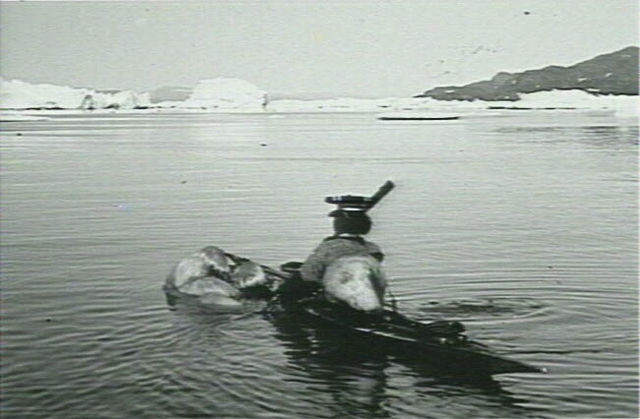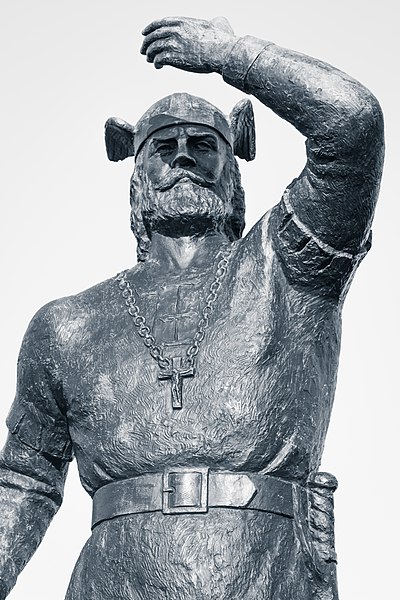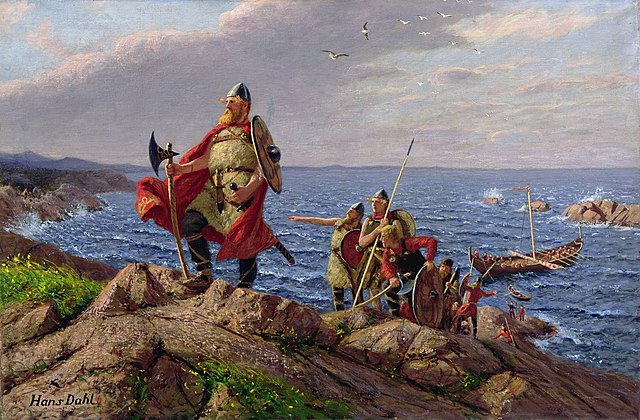The history of Greenland is a history of life under extreme Arctic conditions: currently, an ice sheet covers about eighty percent of the island, restricting human activity largely to the coasts. The first humans are thought to have arrived in Greenland around 2500 BCE. Their descendants apparently died out and were succeeded by several other groups migrating from continental North America. There has been no evidence discovered that Greenland was known to Norsemen until the ninth century CE, when Norse Icelandic explorers settled on its southwestern coast. The ancestors of the Greenlandic Inuit who live there today appear to have migrated there later, around the year 1200, from northwestern Greenland.
Hunting and whaling have always been important ways to make a living on Greenland. One of the animals found here is the polar bear, which is on the coat of arms of the Danish royal family in Greenland.
Summer Night Off the Greenland Coast Circa Year 1000 (Carl Rasmussen, 1875)
Hvalsey Church ruins.
The Pituffik Space Base, established after World War II, is the northernmost base of the US Space Force
Leif Erikson, also known as Leif the Lucky, was a Norse explorer who is thought to have been the first European to set foot on continental America, approximately half a millennium before Christopher Columbus. According to the sagas of Icelanders, he established a Norse settlement at Vinland, which is usually interpreted as being coastal North America. There is ongoing speculation that the settlement made by Leif and his crew corresponds to the remains of a Norse settlement found in Newfoundland, Canada, called L'Anse aux Meadows, which was occupied approximately 1,000 years ago.
Modern artistic rendering of Leif Erikson in Leif Erikson Park, Duluth, Minnesota
Leif Eriksson Discovers America by Hans Dahl (1849–1937)
Modern recreation of the Norse site at L'Anse aux Meadows. The site was originally occupied c. 1021 and listed by UNESCO as a World Heritage Site in 1968
Discovery of America, a postage stamp from the Faroe Islands which commemorates both Leif Erikson and Christopher Columbus








